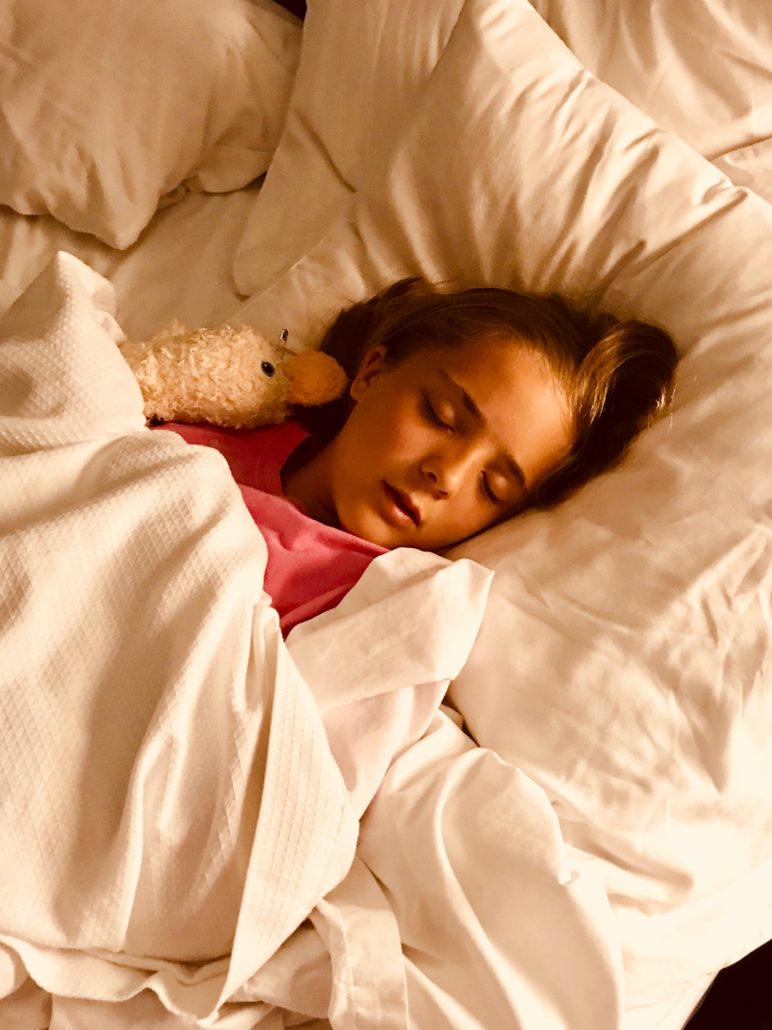

- Call 908 543 4390
- Email
- Dr.Joni Redlich PT,DPT



The autism spectrum refers to a set of neurodevelopmental disorders assessed by a scale of social, communication, and behavioral impairments. Children experiencing Autism Spectrum Disorder (ASD) face many challenges, including issues with their sleep which are particularly challenging.
Anywhere from 44 to 83 percent of children with ASD experience some form of significant sleep disturbance. The biggest challenges are falling asleep, staying asleep, sleep quality, and maintaining a consistent sleep routine.
Infants and preschoolers experience the highest rates of sleep disturbance, which can manifest through settling issues, nightmares, confusional arousals, insomnia, sleep apnea, bedtime resistance, sleepwalking, restless leg syndrome, and night terrors.
Why Children with Autism Suffer in Sleep Quality
There are a number of autistic characteristics that contribute to sleep disturbances in small children with ASD, according to several theories:
Theory one is that children with ASD lack discernment with social cues to tell when everyone else in the household is preparing for bed.
Theory two relates to melatonin and an amino acid called tryptophan. Levels of tryptophan, which helps produce melatonin, the ‘sleep hormone,’ can show up in lower and higher levels in children with ASD. Research also shows that melatonin is not released at the same time of day for children with ASD as with children without ASD.
Theory three is that children with ASD have a heightened sensitivity and awareness to external stimuli, meaning that more sounds and other stimuli can keep them up at night or wake them up at night.
Theory four is that anxiety can keep children with ASD up at night, since research shows that children with ASD tend to have higher levels of anxiety.
Theory five is that children with ASD can have neurotransmitter abnormalities in the brain that can cause disruptions in REM sleep.
How to Help Your Child with Autism Sleep Better
Regardless of the reason behind sleep disturbance, sleep deprivation can cause aggression, depression, hyperactivity, increased behavioral problems, irritability, learning deficits, and poor cognitive performance.
The good news is that there is research and advice on what can be done to alleviate symptoms of ASD based on these proposed root causes that contribute to sleep disturbance. See these five tips on what you can do as a parent to help your child get the sleep he or she deserves:
Instill Relaxation Techniques
Based on the anxiety theory, teaching your child how to self-soothe through anxiety-reducing techniques is paramount for quality sleep. If your child suffers from anxiety, some conventional techniques may work like reading a bedtime story or giving him or her a soothing bath. However, if typical remedies don’t work, consider relaxation techniques like deep breathing, muscle relaxation, and music therapy.
Teach your Child How to Sleep Alone
It can be tough but important to train your child how to sleep by him or herself. A child’s being able to self-soothe and fall asleep without a parent lying beside him or her is an independence milestone that gives the parent more freedom at night as well. See sleep guidelines that every parent should know.
Consider Melatonin Treatments
Remember that according to the melatonin theory, melatonin is either not released at the right time of day and/or not enough is produced due to a lack of tryptophan. The use of melatonin supplements is on the rise, but be aware of all the benefits and risks involved before trying melatonin therapy.
Create a Bedtime Routine
It’s important to make bedtime a positive experience, instead of a time of day met with dread. Create a bedtime routine for your child that he or she will look forward to. Take at least 20 minutes prior to bedtime for your child to unwind, where they know in advance it is bedtime. As with any child, regular bedtimes and wake times are key, and consistency with upholding the routine you create is everything. You can even create a picture book where you include visual cues and the sequence involved in your nighttime routine to educate your child and reinforce the bedtime routine.
Minimize External Stimuli
For children with ASD who experience a heightened awareness and sensitivity to external stimuli, it is essential that you minimize household noises and carefully monitor the thermostat to make sure your child’s bedroom remains cool. Also minimize the amount of light exposure to the room, even if that means installing blackout blinds.
Remember that each child, regardless of an ASD diagnosis, develops in his or her own time, where any differences will show up in time. Based on information available through kidpt.com, know when not to worry and when to seek extra help.
Bio: Ashley Little is a writer for the MA Sleep Institute, an organization dedicated to helping others get their best sleep each night.

Leave a Reply
Want to join the discussion?Feel free to contribute!